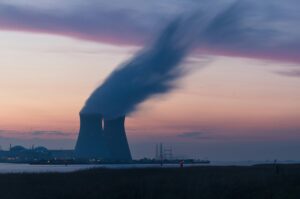
The concept of nuclear fusion is not new to us. It is the same process that takes place in the sun, which keeps it glowing and radiating energy. Nuclear fusion is a nuclear reaction in which atomic nuclei of low atomic number fuse to form a heavier nucleus with the release of energy. For years, scientists have been trying to harness this energy for human use, but it has proven to be extremely difficult.
On Earth, we produce energy mainly by burning fossil fuels. However, this process is not sustainable in the long run, as it leads to the emission of greenhouse gases, which are the primary cause of climate change. Nuclear fusion, on the other hand, has the potential to provide a clean and sustainable solution to our energy and climate crisis.
But why is it so difficult to achieve nuclear fusion on Earth? The answer is that fusion reactions require extremely high temperatures and pressures. At the core of experimental fusion reactors is a high-temperature plasma, which is about 100,000,000 kelvins (K; about 100,000,000 °C, or 180,000,000 °F). This is more than six times the temperature at the centre of the sun, which is required to sustain the fusion reactions. In addition to high temperatures, fusion reactions require high pressures, which are difficult to maintain in a controlled environment.
There are two main approaches to controlled fusion, namely magnetic confinement and inertial confinement. In magnetic confinement, a low-density plasma is confined for a long period by a magnetic field. In inertial confinement, no attempt is made to confine the plasma beyond the time it takes to disassemble. Both approaches have their challenges, and scientists are still working on developing a viable solution for nuclear fusion.
Despite the challenges, nuclear fusion has the potential to provide a long-term solution to our energy crisis. Unlike fossil fuels, nuclear fusion does not produce any greenhouse gases or radioactive waste. It is a clean and sustainable energy source that can provide power to millions of people worldwide without harming the environment.
In recent years, there have been significant advancements in the field of nuclear fusion. Researchers at Lawrence Livermore National Laboratory have released details of a groundbreaking nuclear fusion experiment, known as “ignition,” which produced an excess of energy. The experiment involved 192 lasers blasting a tiny capsule of hydrogen fuel, causing it to implode and release a burst of energy in the form of nuclear fusion. Though there is still a long way to go, this experiment offers hope for a future where nuclear fusion can provide a clean and sustainable solution to our energy and climate crisis.
In conclusion, nuclear fusion has the potential to provide a clean, sustainable, and long-term solution to our energy and climate crisis. Though there are still challenges to be overcome, recent advancements in the field offer hope for a future where we can harness the power of nuclear fusion to power our homes, businesses, and industries without harming the environment.